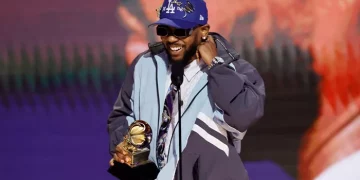Drill music is a subgenre of hip-hop and rap, characterized by its dark, grim, and raw energy. Its themes often reflect life in urban neighborhoods, including violence, struggles, and survival. Drill music has gained global popularity over the past decade, influencing artists and producers across the world. To understand its roots, we need to explore the cultural, social, and geographical context of its emergence.
The Origins of Drill Music
Drill music originated in Chicago, Illinois, in the early 2010s. It was born in the city’s South Side, an area plagued by high levels of poverty and crime. The term “drill” is slang for carrying out tasks, often associated with gang-related activities. The genre emerged as a way for young people to express their experiences in these tough environments.
The foundation of drill music is deeply intertwined with Chicago’s street culture. Its raw lyrics reflect the harsh realities of life in marginalized communities. Artists used the music to narrate their daily struggles, often including themes of violence, loyalty, and survival. Drill music quickly became a voice for the youth in Chicago who felt overlooked by mainstream society.
Key Influencers in Chicago’s Drill Scene
One of the pioneers of drill music is Chief Keef, who gained prominence with his breakout hit “I Don’t Like” in 2012. Chief Keef’s music was characterized by minimalist beats, heavy bass, and raw, unfiltered lyrics. Other notable drill artists from Chicago include Lil Durk, King Louie, and Lil Reese.
These artists brought the drill sound to a wider audience, thanks in part to the rise of social media platforms like YouTube and SoundCloud.
The viral nature of their music videos helped drill music gain traction not only in Chicago but also across the United States.
The Sound of Drill Music
Drill music is known for its distinct sound, which includes:
Dark Instrumentals: The beats often feature ominous melodies, heavy bass, and slow tempos.
Aggressive Delivery: Rappers use a straightforward and confrontational style.
Autotune and Vocal Effects: Many drill tracks incorporate autotune for a polished yet emotional effect.
Producers such as Young Chop played a significant role in shaping the drill sound. Their production techniques emphasized simplicity and intensity, creating beats that complemented the raw energy of the lyrics.
The Spread of Drill Music
While drill music began in Chicago, it didn’t stay there for long. The genre spread to other parts of the world, with local artists adapting the style to their own cultures and environments. Two major regions that embraced drill music are the United Kingdom and New York City.
UK Drill Scene
The United Kingdom adopted drill music in the mid-2010s, particularly in London. UK drill artists like 67, Headie One, and Digga D incorporated elements of grime and road rap into the drill sound.
UK drill differs slightly from its Chicago counterpart, featuring faster tempos and more intricate production. The lyrics still focus on street life, but they also reflect the unique challenges faced by urban youth in the UK. Producers like M1OnTheBeat and Ghosty have become instrumental in defining the UK drill sound.
New York Drill Scene
In New York City, drill music gained traction in the late 2010s, led by artists such as Pop Smoke, Fivio Foreign, and Sheff G. New York drill often blends the Chicago and UK styles, featuring drill beats with a distinct Brooklyn swagger.
Pop Smoke, in particular, played a crucial role in bringing New York drill to the mainstream. His tracks like “Dior” and “Welcome to the Party” became anthems, showcasing the genre’s potential to dominate global charts.
Criticism And Controversy
Drill music has faced criticism for its violent lyrics and alleged connection to real-life gang activity. Critics argue that the genre glorifies violence and perpetuates negative stereotypes about urban communities. In some cases, authorities have blamed drill music for escalating tensions between rival gangs.
In the UK, law enforcement has even taken steps to remove drill music videos from online platforms, citing concerns about public safety.
However, proponents of the genre argue that it is a form of artistic expression and a reflection of the harsh realities faced by many young people.
The Impact of Drill Music on Global Culture
Drill music’s influence extends beyond its original communities. Today, the genre has inspired artists and producers worldwide. Countries like Australia, Canada, and Ireland have developed their own drill scenes, with local artists incorporating regional accents and themes.
Additionally, drill music has had a significant impact on fashion and social media. The genre’s artists often set trends in streetwear, while their viral videos and challenges keep drill music relevant in the digital age.
The Future of Drill Music
Drill music continues to evolve, with new artists and producers pushing the boundaries of the genre. Its global appeal shows no signs of slowing down, as more listeners connect with its raw emotion and authenticity. While the controversies surrounding drill music may persist, its cultural significance cannot be denied.
Conclution
As drill music continues to grow, it remains a powerful voice for marginalized communities, shedding light on their struggles and triumphs. The genre’s journey from the streets of Chicago to international prominence is a testament to the resilience and creativity of its artists.
Drill music, born in the gritty streets of Chicago, has transformed into a global phenomenon. Its journey reflects the power of music to tell stories, connect people, and inspire change. By understanding its origins, we gain a deeper appreciation for this compelling and influential genre.
Related topics:



























